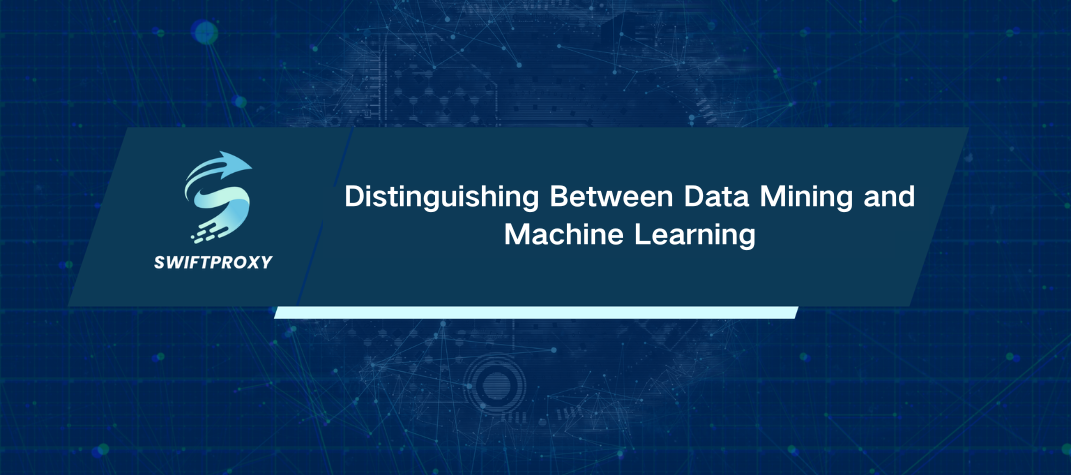Distinguishing Between Data Mining and Machine Learning

Data mining and machine learning have been key areas of focus in the business world for some time. They help companies:
· Gain a clearer understanding of customer needs,
· Conduct thorough analyses of buying patterns,
· Achieve a competitive edge,
· And much more.
Considering this, it’s no surprise that data mining and machine learning have been widely embraced by companies across diverse industries over the years.
Despite this, confusion often surrounds these two advanced data technologies, with many people treating the terms as interchangeable. Although machine learning and data mining share some similarities, they also have distinct differences. Additionally, delving into data aggregation, which is closely related to these topics, can provide further valuable insights.
So, what are the differences between data mining and machine learning? Understanding several key factors can help clarify how they differ. Continue reading as we explore these distinctions in depth.
What Does Data Mining Mean?
Data mining involves analyzing existing datasets to uncover patterns or anomalies that may not have been previously detected. This process helps organizations make better business decisions by identifying the most significant and frequent relationships within the data.
During data gathering and mining, a company can apply various techniques to extract valuable insights from large datasets. This process reveals hidden and intriguing patterns through methods such as:
· Cluster analysis
· Association rule mining
· Anomaly detection
· and numerous other techniques.
For businesses that need to consistently analyze large volumes of data to improve their decision-making, data mining can be exceptionally valuable.
Tracing the Roots of Data Mining
Research indicates that Alan Turing introduced the concept of a universal machine capable of handling large amounts of data in his 1936 paper, *On Computable Numbers*. Given that contemporary computers are based on Turing’s groundbreaking ideas, it is evident that data mining has long been essential and will undoubtedly remain so in the foreseeable future.
Furthermore, data mining has advanced to uncover an increasing array of critical trends that are highly relevant to modern businesses. By leveraging these insights, companies can more effectively gain a competitive edge. Conversely, ignoring these trends may lead customers to prefer other brands.
To underscore the significance of data mining, a recent study by London South Bank University revealed that it can be utilized to develop customer-focused business intelligence for online retailers. This insight is valuable for crafting targeted marketing strategies and enhancing profitability.
What Does Machine Learning Mean?
Since Arthur Samuel coined the term "machine learning" in 1959 with his checkers-playing program, it has been embraced by businesses worldwide as a sophisticated technology. It is frequently applied to enhance sales processes, boost efficiency, and serve a variety of other functions.
Considering how machine learning has increasingly simplified manual tasks over time, it's clear that machine learning will remain a key factor in shaping the future of companies across numerous industries.
The Connection Between Data Mining and Machine Learning
Machine learning often works in conjunction with data mining, serving as a key component in initiating the machine learning process for data scientists. Both technologies are deeply integrated into data science, which is why many people consider them interchangeable. This is understandable, as both machine learning and data mining rely on similar fundamental algorithms.
In reality, several key factors distinguish these two technologies.
One of the most notable is that machine learning can replicate human behavior and improve its task performance over time through a process of self-learning.
Additionally, unlike data mining, machine learning leverages existing data to allow machines to self-teach and enhance their performance over time.
Applications of Machine Learning
A practical example of machine learning is fraud detection, a task that machines can usually handle much faster than human intervention alone. This is because machines can identify suspicious activity at the earliest opportunity, effectively stopping potential fraudsters before they can act.
Furthermore, many current services, such as search engines like Google, demonstrate the practical benefits of machine learning. You can enter search terms via text or voice, and the system provides relevant suggestions that can greatly assist with your online research.
Wrapping Up
As you may already know, data mining and machine learning are not recent innovations; both technologies were established well before the digital age. Nevertheless, despite their long history, their impact is still significant and continues to be felt in numerous ways today.
Overall, both technologies offer substantial potential benefits for your business. With a clear understanding of their differences, you are now equipped to decide whether machine learning or data mining will best serve your needs.
If you're interested in learning more about data collection or starting a web scraping project with paid proxy servers, consider Swiftproxy. Our team will be happy to assist you.

















































